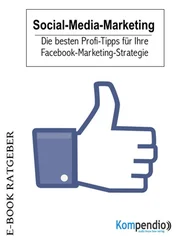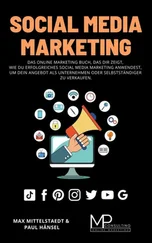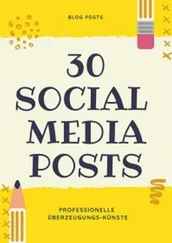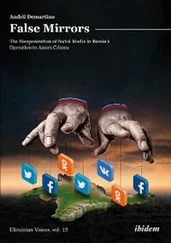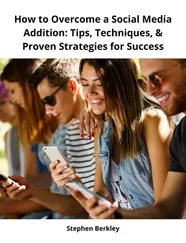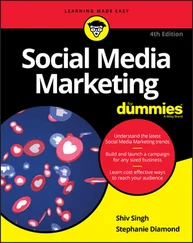15 Rusk M.D. (2000). Video projectors: Media services in the high technology classroom. Community and Junior College Libraries 9 (3): 55–59. https://doi.org/10.1300/J107v09n03_08.
16 Sheeran N., and Cummings D.J. (2018). An examination of the relationship between Facebook groups attached to university courses and student engagement. Higher Education 76 (6): 937–955. https://doi:10.1007/s10734%E2%80%93018%E2%80%930253%E2%80%932.
17 Vimeo. (2020). Our passionate community. About (9 June).
Social Media and Civic Engagement in the College Classroom: Reflections on a Social Media Campaign Promoting Diversity and Inclusion
Drew T. Ashby-King
Drew T. Ashby-King, MS (University of Tennessee, Knoxville) is a doctoral student and graduate teaching assistant in the Department of Communication at the University of Maryland. Drew’s scholarship focuses on the intersection of instructional, organizational, and intercultural communication. He is interested in understanding student-institutional relationships and how institutional contexts influence classroom communication and student learning and development.
As an undergraduate student, I thought of social media as a place to share funny videos, connect with family members who lived overseas, and where some posted hurtful messages. During sophomore year, my perspective began to change when I enrolled in a communication course focused on persuasion. This class took a service-learning approach by having students apply theories of persuasion to an anti-hate social media activism campaign. My experience in Dr. Lisa Hanasono’s persuasion class taught me how social media can be used as a tool for civic engagement and activism in the classroom and beyond.
Social Media in a Persuasive Communication Course
At the beginning of the semester, the professor announced that we would be actively using social media in class and collectively launching a campaign focused on anti-hate social media activism. As a student, I was excited. I was rarely, if ever, told it was okay to use social sites in class. Hanasono (2017) explains the approach to this course in “Making a difference: A community-based campaign that promotes diversity and inclusion.” Throughout the semester, we used social media during in-class activities, as part of out-of-class assignments, and in our semester-long group project.
As we learned about theories of persuasion, social media posts were often used as examples. Theories would be applied to posts as a way for us, as students, to connect course content to examples present in our own lives. When given the opportunity to use social media during in-class activities, we would search social sites to find posts that were strong examples of what we were discussing in class that day. As the semester progressed, we also wrote persuasive messages that could be posted on different platforms, taking into consideration the features of each (e.g. Twitter’s character restriction) and how theories could be effective or ineffective guides when writing persuasive social media posts based on the unique characteristics of each platform.
Social media was also central to the activities and assignments outside of the classroom. In small groups, we took what we learned through in-class activities and applied it to our larger assignments. Throughout the semester, we had to persuade our friends and family to engage with our campaign’s social media platforms and ask them to create anti-hate messages that supported the mission of the campaign. Toward the end of the semester, as a summative assignment, each group took charge of posting on one of the campaign’s social media platforms by applying what we learned throughout the semester in a setting that would be viewed by everyone we persuaded to engage with the campaign.
Reflecting on This Course’s Role in My Academic Success
Looking back on this experience, I can see the role it played in my learning and development as an undergraduate student. This class connected my interest in how individuals used social media with my academic coursework. It highlighted the issues of diversity, inclusion, and social justice that I was learning about in class and through my co-curricular activities. It provided an example of how social media could be used for civic engagement and was the foundation for my undergraduate thesis project, which allowed me to explore these ideas further. The experience of incorporating social media throughout the course kept me engaged in class, shifted my perspective on how social media was related to civic engagement, and shone a light on how other coursework connected to my experiences.
Using social media in class and to engage with the instructor contributed to my academic success. It gave me permission to use a form of communication that is often thought of as a disruption in the classroom. Throughout my college experience I was often told that technology, especially smartphones, was distracting and should not be used in the class even if I was using said technology to engage with relevant material. I found that when social media and technology were integrated into the course, I was less likely to use it when I was not supposed to and was more engaged. Coming into class, I knew that I did not necessarily need to look something up right away when listening to a mini lecture because shortly we would be doing an activity where I could use my phone or computer. Acknowledging technology and social media as a resource available to students ensured that these platforms were no longer distractions, but opportunities allowing me to further engage with course content.
The approach taken in this course kept me engaged as a student and challenged me to think about social media as a space for dialogue and deliberation. I often engaged with social media as a distant observer, regularly checking several platforms (e.g. Facebook, Twitter, Instagram), but rarely posting content of my own. Although this is still my general approach to engaging with social media, this course challenged me to think about its possibilities more broadly. Throughout the course, I was introduced to movements (e.g. the Arab Spring) that used social media to liberate citizens and communicate with the world. I now understand social media as platforms where folks can organize, where people can build community, and as a place for dialogue, and possibly deliberation. The application of theories of persuasion to a social media context allowed me to understand that when used intentionally, social media could be a place where citizens enact change. By engaging social media and technology and using them in different service-learning contexts, instructors could have the opportunity to inspire a change in students’ perspectives.
Framing the campaign around diversity, rather than simply applying theories of persuasion to social media, I began the process of thinking about platforms as possible sites for civic engagement and meaningful activism. Examples like #BlackLivesMatter, and later #MarchForOurLives, created discussions about the hashtag activism I saw people using on social media as a way to facilitate change on issues present in the communities I was in. Social media posts were generating in-person conversation, but I also wondered about the possibility of dialogic and deliberative conversation in online spaces. This connection spurred my academic success because these ideas became the foundation of my undergraduate honors thesis (Ashby-King and Hanasono 2018) where the findings were later published. When thinking about the transformative learning that occurred in the course for me, I wanted to see if this was happening for others. Although this example may not reflect every student’s experience, instructors can use it to consider how to connect their coursework to topics that will be meaningful for those enrolled. This could be done for semester-long work or for individual assignments where students are selecting their own topics. Connecting course material, civic engagement, service-learning, and students’ everyday experiences on and offline could provide the connections students need to promote their academic success.
Читать дальше


